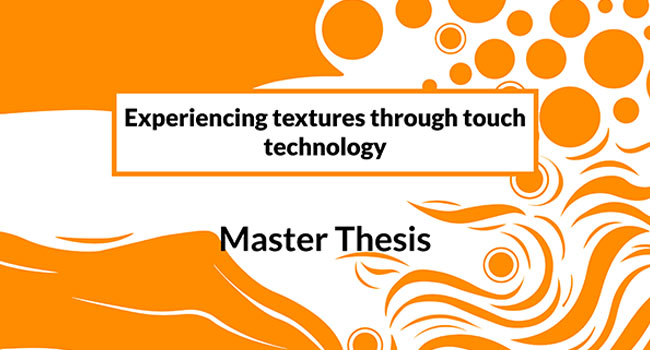Final Thesis
If you are interested in reading my master thesis go to this page: Meijer, Adam (2023) Experiencing Textures Through Touch Technology.
Experiencing Textures Through Touch Technology
The hedonic and arousing qualities of touching materials have been identified as a gap in the existing literature, particularly in relation to their implications for mediated social touch technology. Recent research has sparked debates regarding the softness dimension out of the five dimensions of texture. On top of that extending the social affective touch hypothesis by emphasizing the significant role played by both C-tactile touch and deep pressure in generating pleasant tactile sensations. In this research, a series of three studies were conducted using a McKibben sleeve, which utilizes pressure touch through pneumatic actuation. The aim of this research was to explore the effects of different pressures and textures on evoking affective sensations. Therefore a total of 17 textures were designed and selected to investigate which textures evoke which emotional response. Past research proposed, after an active touch experiment, that the perceived softness of a material consists of the properties of compliance, granularity, viscosity and furriness. Hence in this study, it was studied if these properties could be translated to passive touch. In the first study, participants were tasked with identifying 17 textures suitable for passive touch based on material properties compliance, granularity, viscosity, furriness, and softness. Subsequently, in a second study participants were asked to rate different pressure touches, varying in force and duration. Finally, in a third study, participants reported the emotional sensations evoked by three pre-validated textures. This evaluation was carried out using a check-all-that-apply list consisting of 25 items and the Emojigrid to capture affective responses. The findings revealed that the level of compliance had the most effect on the perceived softness of a texture. Moreover, both force and texture were found to impact the experience of passive pressure touch. These results serve as a foundation for the application of textures in mediated social touch technologies, as well as for further exploration of their potential use cases in the field of haptics.
